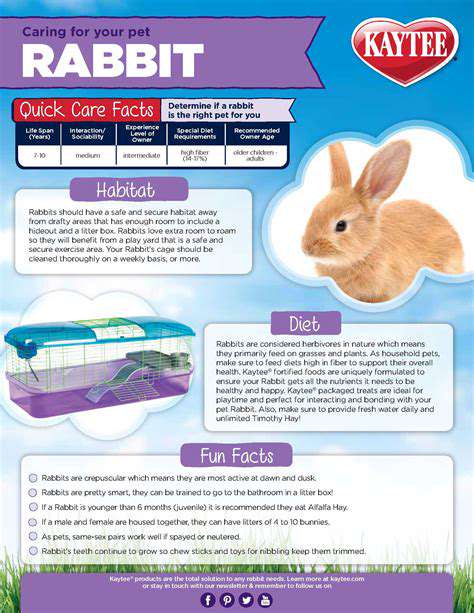Feeding Your Reptile: Diet Guide
Reptiles represent one of nature's most adaptable groups, with digestive systems finely tuned to their ecological niches. Unlike mammals, their gastrointestinal tracts reflect evolutionary compromises between efficiency and flexibility. This biological diversity makes reptiles fascinating subjects for both hobbyists and researchers alike. Whether keeping a pet bearded dragon or studying wild crocodilians, recognizing these variations proves essential for proper care.
Meat-eating species typically possess streamlined digestive anatomy, optimized for rapid protein breakdown. Yet even among carnivores, subtle differences emerge - a monitor lizard's gut differs markedly from a rattlesnake's, reflecting their distinct hunting strategies and prey preferences. These nuances underscore why blanket care recommendations often fail captive reptiles.
Specialized Digestive Adaptations
Snakes demonstrate perhaps the most extreme digestive adaptations, capable of swallowing prey larger than their own heads. Their expandable connective tissues and potent gastric acids allow digestion of entire carcasses, bones included. Remarkably, some species can survive on just a few large meals annually, conserving energy between feedings.
Plant-eating reptiles face the opposite challenge: extracting nutrition from fibrous, nutrient-poor vegetation. Iguanas and tortoises solve this through extended fermentation chambers where symbiotic microbes break down cellulose. This microbial digestion parallels that of grazing mammals, though occurring at lower body temperatures. Such systems demand careful dietary management in captivity to prevent life-threatening impactions.
Factors Influencing Digestive Processes
Three key variables govern reptilian digestion: thermal environment, hydration status, and dietary composition. Unlike warm-blooded animals, reptiles rely on external heat sources to power their metabolism. Carnivorous species often bask after eating to accelerate digestion, while herbivores may require sustained warmth for proper fermentation.
Water availability critically impacts gut function across all species. Dehydrated reptiles struggle with food breakdown and nutrient absorption, sometimes leading to dangerous intestinal blockages. Keepers must provide both drinking water and proper humidity levels, especially for tropical species. Monitoring fecal output remains one of the simplest yet most effective health checks.
Digestive Issues and Care
Gastrointestinal disorders rank among the top reasons for veterinary visits in captive reptiles. Common problems include parasitic infections, bacterial imbalances, and dietary-related impactions. Early warning signs often appear subtle - reduced activity levels, slight posture changes, or minor appetite fluctuations.
Preventative care proves far more effective than treatment. Establishing species-appropriate thermal gradients, providing proper UV lighting, and offering balanced diets can prevent most digestive issues. When problems arise, prompt consultation with an exotic animal specialist becomes crucial, as reptiles often hide illness until advanced stages.
A Deep Dive into Carnivorous Reptile Diets
Understanding Carnivorous Reptile Diets
Predatory reptiles occupy diverse ecological roles, from insectivorous geckos to apex-predator crocodiles. Their nutritional needs reflect these niches, with some species requiring specific prey items for proper development. For example, growing chameleons need particular insect exoskeletons for calcium, while large pythons benefit from whole-prey nutrients.
Modern herpetoculture emphasizes whole prey feeding whenever possible. Rodents, birds, and fish provide complete nutrition when fed appropriately, unlike processed foods that may lack essential nutrients. This approach mirrors natural feeding patterns while minimizing nutritional deficiencies common in captivity.
Importance of Prey Variety
Wild predators rarely specialize on single prey species, instead consuming whatever proves available and catchable. Replicating this diversity in captivity prevents hidden hunger - situations where animals eat adequately but still lack micronutrients. Rotating between crickets, roaches, and worms for insectivores, or alternating rodents and chicks for snakes, better approximates natural feeding ecology.
Seasonal variation also matters. Many temperate-zone reptiles naturally experience feast-and-famine cycles, with gut microbiomes adapting accordingly. While constant feeding may seem kind, it often leads to obesity and related health issues. Strategic fasting periods can actually benefit certain species when properly managed.
Proper Prey Size and Frequency
The 10-15% of body weight guideline often proves misleading, as metabolic rates vary tremendously among species. Active hunters like monitors need more frequent, smaller meals than ambush predators like ball pythons. A better approach involves monitoring body condition - ribs should be palpable but not visible, with a smooth taper from body to tail.
Prey presentation also affects feeding response. Some species prefer live prey movement, while others accept thawed frozen items. Understanding individual preferences reduces stress during feeding. Always supervise live feedings to prevent injury to either animal, and consider humane pre-killing methods when possible.
Nutritional Supplements and Considerations
Even varied diets sometimes require supplementation, particularly regarding calcium and vitamin D3. The key lies in balanced supplementation - too little causes metabolic bone disease, while excess can lead to organ damage. Gut-loading feeder insects with nutritious diets before offering them provides a natural delivery method for many nutrients.
UVB lighting deserves special mention for diurnal species. Proper wavelengths enable vitamin D synthesis, crucial for calcium metabolism. However, bulb intensity decreases over time even if still emitting visible light. Replace UVB sources every 6-12 months, and ensure basking spots fall within the manufacturer's recommended distance range.
Safe Handling and Prey Preparation
Feeding time presents risks beyond nutritional concerns. Bacterial contamination from prey items can cause serious infections, especially in immunocompromised reptiles. Always source feeders from reputable suppliers, and thoroughly rinse all plant matter for herbivores. Frozen prey should be completely thawed in refrigeration, never at room temperature.
Feeding enclosures help separate hunting behavior from general habitat, reducing stress. After meals, allow adequate digestion time before handling - typically 24-48 hours depending on meal size. This prevents regurgitation and allows proper nutrient absorption. Clean all feeding implements thoroughly between uses to prevent cross-contamination.
Tension headaches involve muscle contractions in head and neck regions, often triggered by stress or poor posture. These create characteristic dull, aching pain distinct from other headache types.
Herbivorous Reptile Diets: A Focus on Plant-Based Nutrition

Herbivore Feeding Strategies
Plant-eating reptiles employ various strategies to overcome vegetation's structural and chemical defenses. Some, like green iguanas, carefully select young leaves highest in protein and lowest in toxins. Others, like many tortoises, process large quantities of fibrous material through extended fermentation. These divergent approaches require fundamentally different captive feeding protocols.
Behavioral adaptations complement physiological ones. Many herbivores bask after eating to raise core temperatures, enhancing microbial fermentation efficiency. Some species even practice coprophagy (eating feces) to maximize nutrient extraction - a behavior keepers should understand rather than discourage when it occurs naturally.
Nutritional Requirements and Plant Composition
Not all greens are created equal for herbivorous reptiles. While kale and spinach offer calcium, their oxalate content can inhibit absorption. Dandelion greens, endive, and escarole often provide better calcium-to-oxalate ratios. Fiber content also varies dramatically - grasses suit high-fiber specialists like sulcata tortoises, while leafy greens better match forest-dwelling species.
Seasonal diet rotation proves valuable, mimicking natural availability cycles. Spring greens typically offer higher protein levels than mature summer vegetation. Incorporating edible flowers and occasional fruits (in moderation) provides phytonutrients absent in staple greens. Always research species-specific toxic plants - common garden plants like azaleas can prove deadly.
Digestive Adaptations for Plant Material
The reptilian solution to plant digestion varies from simple colonic fermentation to complex hindgut chambers. Some species, like green iguanas, possess highly developed colons with pH gradients facilitating microbial breakdown. Others rely on extended retention times - food may remain in a tortoise's gut for weeks during cold periods.
These adaptations explain why sudden diet changes often cause problems. Gut microbiomes require time to adjust to new food sources. When transitioning diets, make gradual changes over several weeks, mixing increasing proportions of new items with familiar ones. This approach minimizes digestive upset and allows microbial populations to adapt.
Environmental Factors and Dietary Variation
Natural herbivore diets shift with habitat and season. Desert tortoises consume spring annuals before summer dormancy, while tropical species may browse year-round. Captive diets should reflect these patterns, not provide uniform meals regardless of season. Even indoor-kept reptiles benefit from seasonal diet variations that approximate natural cycles.
Environmental enrichment through feeding methods also matters. Scatter feeding encourages natural foraging behaviors in many species. Hanging greens at different heights stimulates activity in arboreal herbivores. These techniques promote physical and mental health beyond basic nutrition.







![Review: [Specific Brand] Pet Odor Eliminator](/static/images/33/2025-05/ValueforMoneyandAlternatives.jpg)


![Best Pet Strollers [For Seniors or Injured Pets]](/static/images/33/2025-05/ImportantConsiderationsBeforePurchase.jpg)
